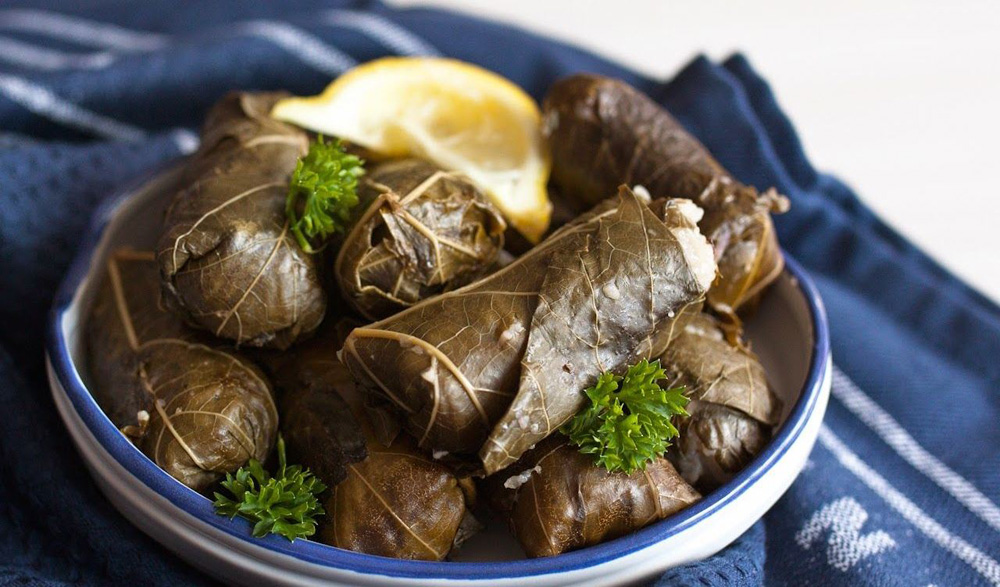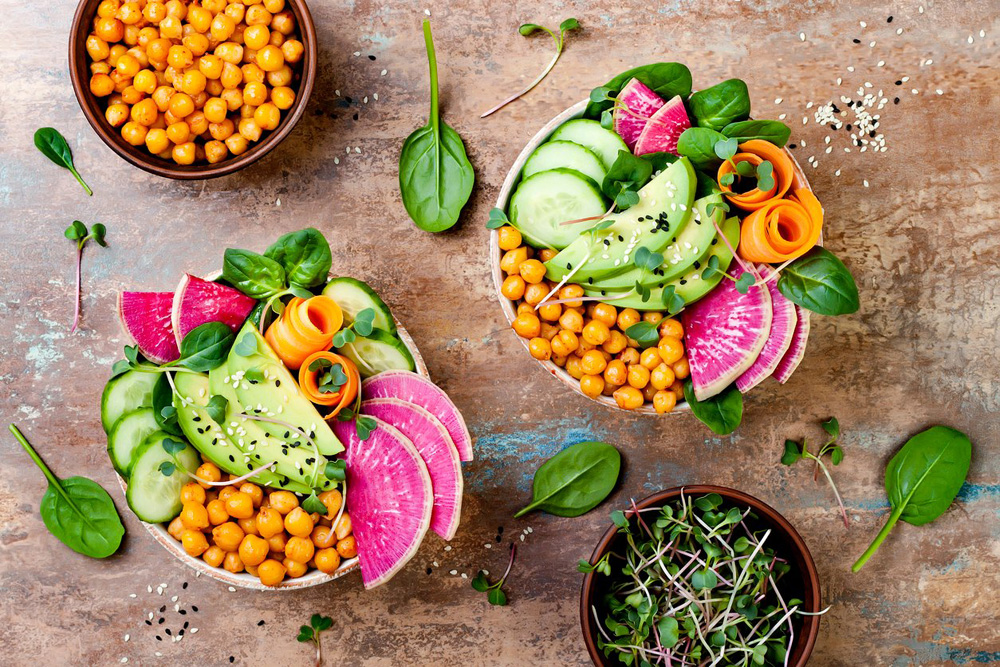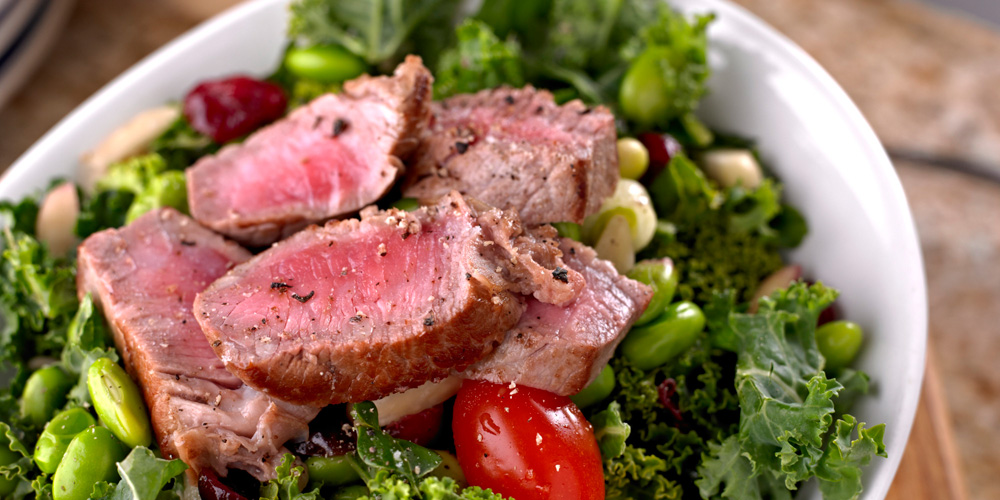
If you’re fasting and are worried about how you’re going to stick to your diet plan, and not be tempted by all the Iftar treats, we’ve come across a few healthy Iftar diet plates that won’t let you stray from your dietary plans:
Vegetarian Vines

Vegetarianism isn’t always the easiest way of life in the Middle East especially since the Arab diet is so meat heavy, however, if you don’t eat meat and fish, Iftar tables will still offer up an array of vegetarian friendly options.
Not consuming meat may seem like a lighter way to eat – but it is important to remember that it doesn’t always equate to healthy or low calorie.
To keep your Iftar plates low fat, carb and low calorie, stay away from deep fried foods including samosas, white-rice dishes, and pastries and opt for vegetables, whole grains, beans, and low-fat dairy products – which will keep you full and feeling healthy.
Over Ramadan, your vegetarian diet could look like this:
- 1 rice-stuffed vine leave roll
- 1 small serving of soup
- 5 tbsp tabbouleh salad
- 2 tbsp baba ganoush
- 2 tbsp feta
- 1 qatayef pastry
- Tea or Turkish coffee (sugar-free)
- Total calories: 700-800
Low Cal Pal
Those of us trying to lose weight often do a thing called calorie counting, which helps us remain mindful about how much food we are consuming.
Low calorie Iftar foods such as baba ghanoush and halloumi are full of protein and fiber and will keep you satiated for a longer amount of time, meaning you’ll consume less.
Counting those calories still applies over Ramadan and though we love a cheat day now and again, we don’t want to steer too far from all the hard work we’ve been putting in prior to fasting. So this is perhaps what we should be loading our Iftar plate with:
- Green salad
- 2 pink pickled radishes
- 2 tbsps baba ghanoush
- 1 slide of halloumi
- 1 tbsp hummus
- 1 piece pickled baby eggplant
- 1 date
- Tea or Turkish coffee (sugar-free)
- Total calories: 300 – 400
Vegan Matters

Veganism is known to be the more restricted form of vegetarianism, where not only are meat and fish banished from the diet, but also any animal related products such as eggs, dairy, and even honey!
A vegan diet at Ramadan Iftars can be a struggle as one must watch out for hidden animal produce such as butter and honey which are used in many Middle Eastern desserts.
Just to be on the safe side, we’d skip out the dessert part entirely and load our plates up with vegetables and legumes to keep our meal healthy, whilst not being lured in by the carb heavy foods such as rice and Arabic bread –which is vegan by the way.
A good vegan Iftar plate should include the following:
- 5 tbsp fattoush
- 2 tbsp hummus
- 5 tbsp foul beans
- 1 piece of falafel
- Fresh salad and vegetables
- 1 date
- Mint tea – no sugar
- Total calories: 600-700
Paleo (Has nothing to do with Paleontology)

If you don’t know anything about the Paleo diet, it is one that focuses entirely on eating whole foods and eliminates grains, sugars, processed food, legumes, and starches whilst focusing on healthy fats and protein. It’s another low-carb diet and actually one that’s pretty tough to stick to in this region. It is also gluten-free.
The Paleo diet during Ramadan Iftars is a rather challenging one, as most Middle Eastern meals include wheat, even in the salads like fattoush and tabbouleh, contain wheat and bulgur and are a no-no! Paleo dieters should also stay away from kibbeh, fattayer, shawarma, arayes, Arabic pita breads, malfoof, harira, ouzi, and hares as well as some meats and sausages that are prepared in sauces that may contain wheat – which is a hidden ingredient in most sauces and marinades – so we’d recommend avoiding pre-cooked meat curries, rice dishes and anything else in gravy.
We know this sounds torturous but you may have to skip the dessert too. Your Paleo Iftar plate could include:
- 6 olives
- 1 mixed grill skewer or 1 fillet of fish or 1 piece of stuffed zucchini
- 1 tbsp yogurt
- 1 tbsp baba ghanoush
- Green salad
- Bowl of berries/fruit
- Tea or Turkish coffee (sugar-free)
- Total calories: 600-700
7 Healthy Iftar Tips
- Keep yourself hydrated with a round of coconut water or lemon water which contain electrolytes to energise you
- Sip on fresh mint tea to help you digest your Iftar meal
- Avoid fruit juices as they can contain up to 100 calories per serving!
- Aim to break your fast with a small piece of fruit or a date as they will help to stabilize your blood sugar levels
- Use a smaller plate and avoid second helpings
- Skip starters and desserts and focus on the mains
- Don’t be so hard on your body during Ramadan and avoid high intensity work outs!

















